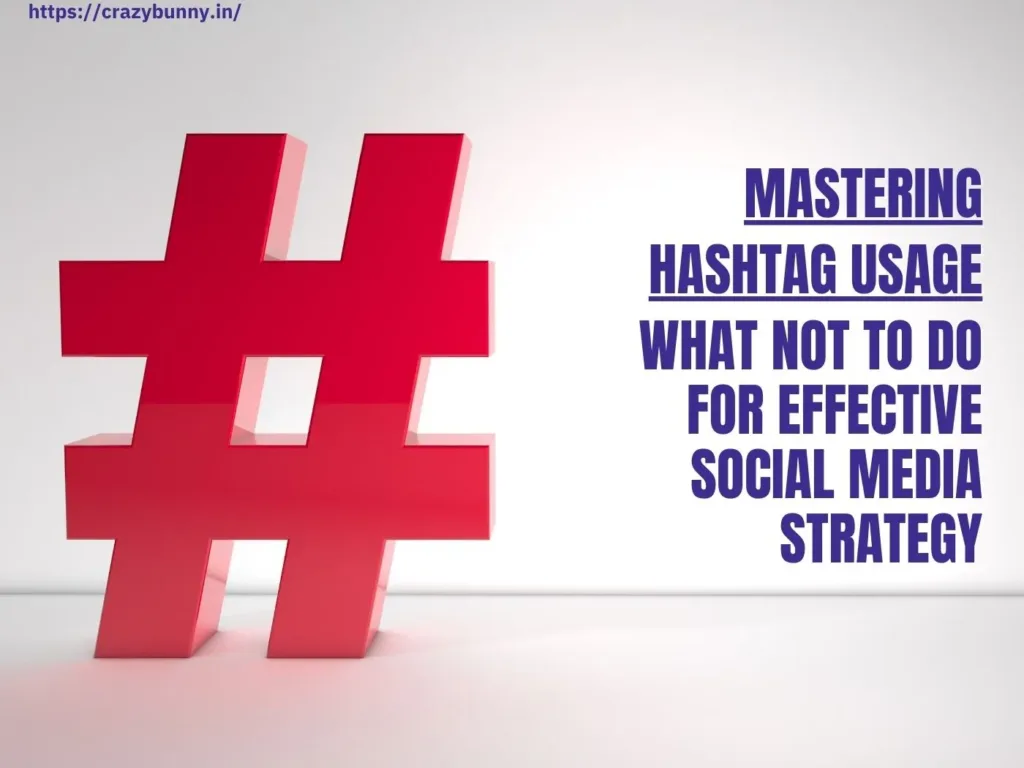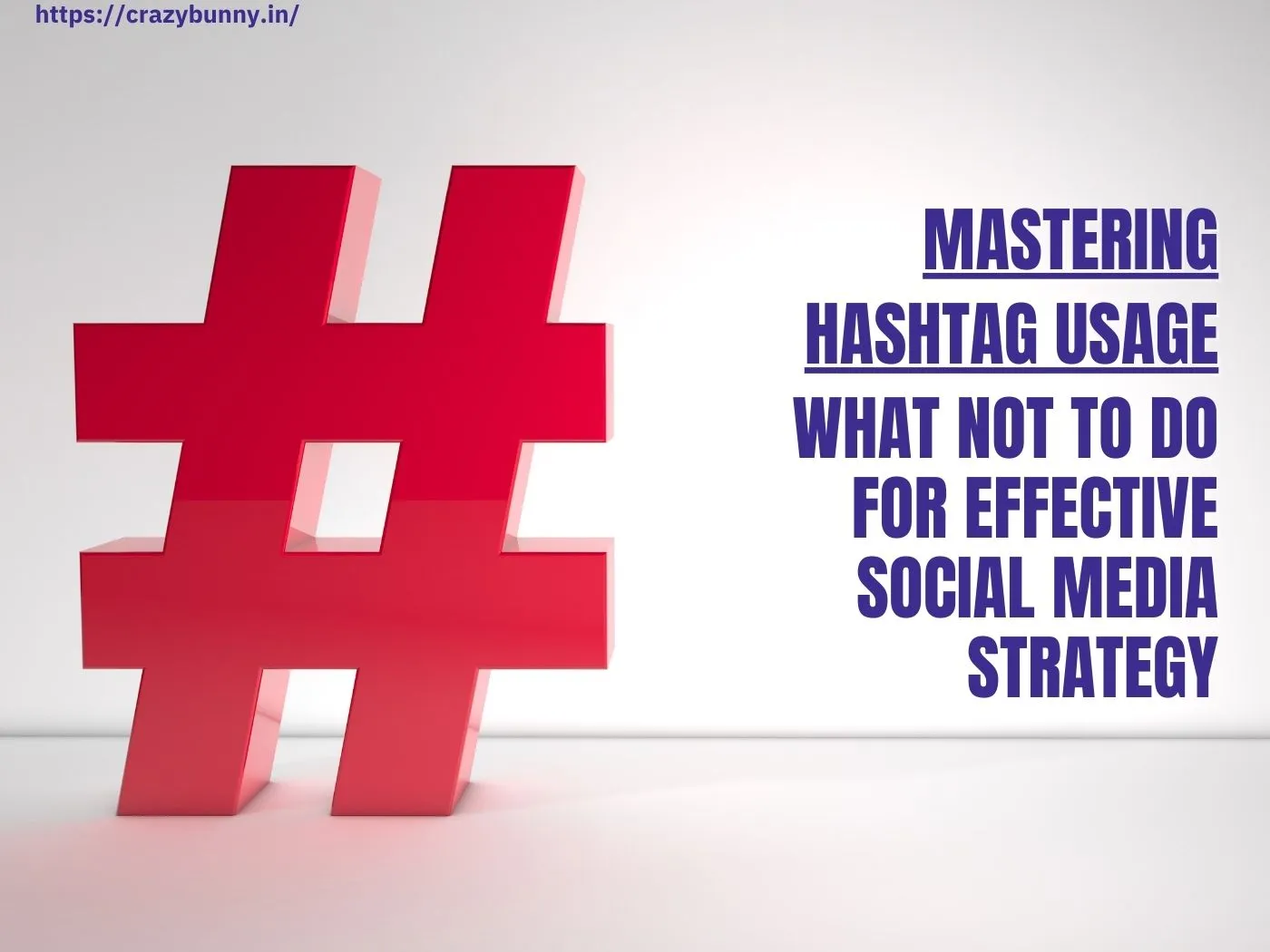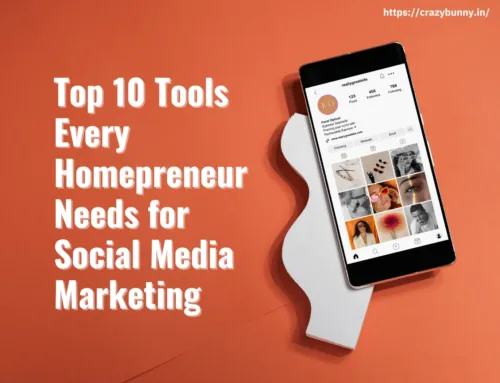
In today’s digital landscape, hashtags play a vital role in maximizing your content’s visibility on platforms like Instagram, Twitter, LinkedIn, and TikTok. However, while the correct usage of hashtags can boost engagement and expand your reach, improper use can do more harm than good. Let’s dive into the “don’ts” of hashtag usage to avoid common pitfalls and improve your social media game.
Do not repeat these mistakes while using hashtags for Social Media Marketing
1. Don’t Overstuff Hashtags
Hashtag overstuffing refers to the practice of cramming as many hashtags as possible into a post. While it’s tempting to add more in hopes of capturing a larger audience, too many hashtags can have the opposite effect. Overloading your posts with hashtags makes your content appear spammy, reducing its credibility and appeal.
- Example (Wrong):
“Check out this awesome toy! #toy #kids #fun #playtime #besttoys #amazingtoys #toylove #playworld #children #games #superfun #toyunboxing #cooltoys #excitingplay” - Example (Right):
“Check out this awesome toy! #toyunboxing #funforkids #playtime”
The right balance typically falls between 5 to 10 relevant hashtags. Using too many makes your post look cluttered and detracts from the quality of your message.
2. Don’t Use Irrelevant Hashtags
Hashtags should align with your content. Some users make the mistake of hijacking popular but unrelated hashtags in the hope of gaining extra visibility. This tactic backfires, as users who discover your content via irrelevant hashtags will likely ignore or unfollow your account. Worse, platforms may detect this behavior and penalize your post, reducing its organic reach.
- Example (Wrong):
“Loving this new puzzle set! #fashion #makeup #summerfun” - Example (Right):
“Loving this new puzzle set! #puzzlesforkids #brainteasers #educationaltoys”
Using irrelevant hashtags makes you seem out of touch and damages your brand’s authenticity. Always stick to hashtags that directly relate to your product or message.
3. Don’t Use Long, Complex Hashtags
Hashtags are meant to be simple, concise, and easy to remember. Overly long or complicated hashtags are hard to follow and difficult for users to search for or engage with. Short, punchy hashtags are more likely to be used by others and remembered.
- Example (Wrong):
“We’re about to unbox something amazing! #SuperAwesomeToyUnboxingExperienceForKidsAndParents” - Example (Right):
“We’re about to unbox something amazing! #toyunboxing #playtime”
Short, relevant hashtags are easier for users to engage with, and they improve the discoverability of your content.
4. Don’t Use Banned or Broken Hashtags
Certain hashtags get banned or restricted by platforms for violating community guidelines or being associated with inappropriate content. If you use these hashtags, even unknowingly, your post could be shadowbanned, meaning it won’t show up in searches or feeds. Always check that the hashtags you’re using are safe and active.
- Example (Wrong):
“Let’s play with these toys! #instakids”
(#instakids is banned on Instagram) - Example (Right):
“Let’s play with these toys! #kidstoys #funplay”
Before using a hashtag, search for it on the platform to make sure it isn’t banned. A quick check can save you from potential visibility loss.
5. Don’t Repeat the Same Hashtags for Every Post
Using the same set of hashtags repeatedly for every post will not only make your content look monotonous but may also limit your audience. Platforms like Instagram prioritize variety and originality in content, and repetitive hashtag usage could cause your posts to perform poorly over time.
- Example (Wrong):
Using the same set of hashtags for every post: “#toys #fun #kids #play” - Example (Right):
Post 1: “#toyunboxing #cooltoys #funforkids”
Post 2: “#creativeplay #educationaltoys #buildandplay”
Mixing up your hashtags ensures your content is discovered by different audiences, broadening your reach.
6. Don’t Neglect Niche Hashtags
While it’s easy to gravitate toward broad, popular hashtags like #toys or #fun, niche hashtags are often more effective for engaging a specific audience. Using only generic hashtags can cause your post to get lost in the sea of content. Niche hashtags, however, allow you to target an engaged and relevant community.
- Example (Wrong):
Only using broad hashtags like “#toys #fun #kids” - Example (Right):
Adding niche hashtags like “#STEMtoys #woodentoys #imaginativeplay”
By using niche hashtags, you’ll connect with a more targeted group that’s likely to be interested in your content and brand.
7. Don’t Use Hashtags Without Research
Many people fall into the trap of randomly choosing hashtags without researching their relevance or popularity. Using low-performing hashtags or ones that are not associated with your audience won’t help you gain traction. Always research hashtags to ensure they’re popular, active, and relevant to your content.
- Example (Wrong):
Using unresearched hashtags like “#toysforyou” and “#funforall” without knowing their performance. - Example (Right):
After research, using effective hashtags like “#buildingskills #openendedplay #kidstoysreview”
Researching hashtags ensures you’re tapping into trends and conversations that matter to your audience.
8. Don’t Put Hashtags in the Body of Your Text
Hashtags should complement your post, not clutter your message. Putting them directly in the body of your text interrupts the flow and makes the content harder to read. It’s better to place hashtags at the end of your caption or in the comments section.
- Example (Wrong):
“This is the best #toyunboxing I’ve done! I love #playtime with these #toys!” - Example (Right):
“This is the best unboxing I’ve done! I love playing with these toys!
#toyunboxing #playtime”
Keep the focus on your message, and let hashtags support it from the sidelines.
9. Don’t Overuse Brand-Specific Hashtags
While it’s important to include your own branded hashtags, overdoing it can make your content feel too promotional. Balance is key. Incorporate both your brand’s hashtags and industry-relevant hashtags to ensure broader discoverability.
- Example (Wrong):
“Get your toys now! #ToyFort #ToyFortToys #ToyFortUnboxing #ToyFortFun #ToyFortKids” - Example (Right):
“Get your toys now! #toyunboxing #funforkids #ToyFort”
Balancing branded hashtags with general industry tags ensures your content appeals to both loyal followers and new audiences.
10. Don’t Use Outdated or Trendy Hashtags
Using outdated or overly trendy hashtags can make your content seem irrelevant or out of touch with current interests. Stay current with hashtag trends but make sure they’re relevant to your audience and content.
- Example (Wrong):
“Time for some fun! #fidgetspinner #harrypottertoys” (when these trends are no longer current) - Example (Right):
“Time for some fun! #puzzlesforkids #interactiveplay #brainbuildingtoys”
Make sure your hashtags are aligned with current, relevant trends and industry developments.
Conclusion
Hashtags are a powerful tool for expanding your reach and engaging with a broader audience on social media, but only if used correctly. Avoiding these common mistakes—like overstuffing, using irrelevant or banned hashtags, and ignoring niche or researched ones—will help your content stand out and connect with the right people. By refining your hashtag strategy, you’ll build a stronger, more engaged following while enhancing your brand’s credibility and visibility.





